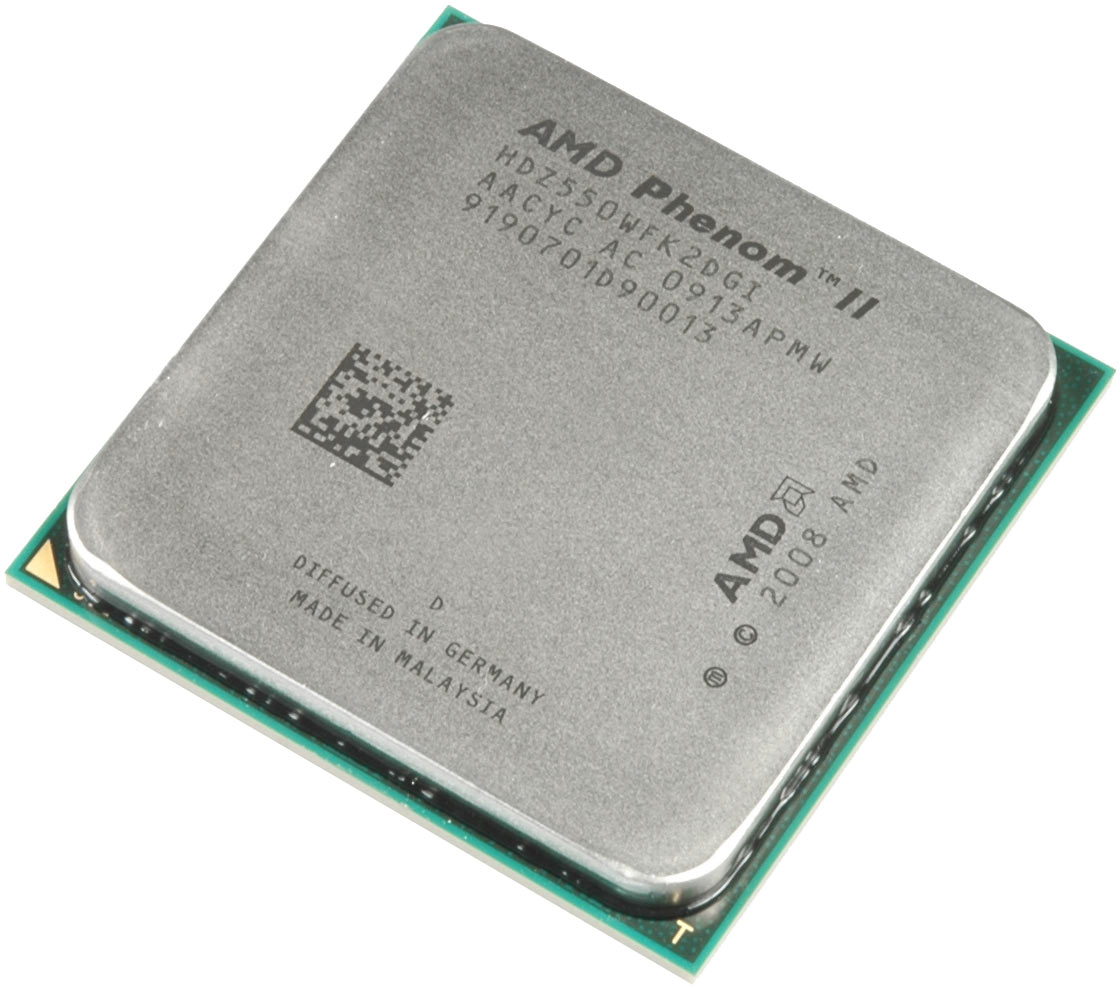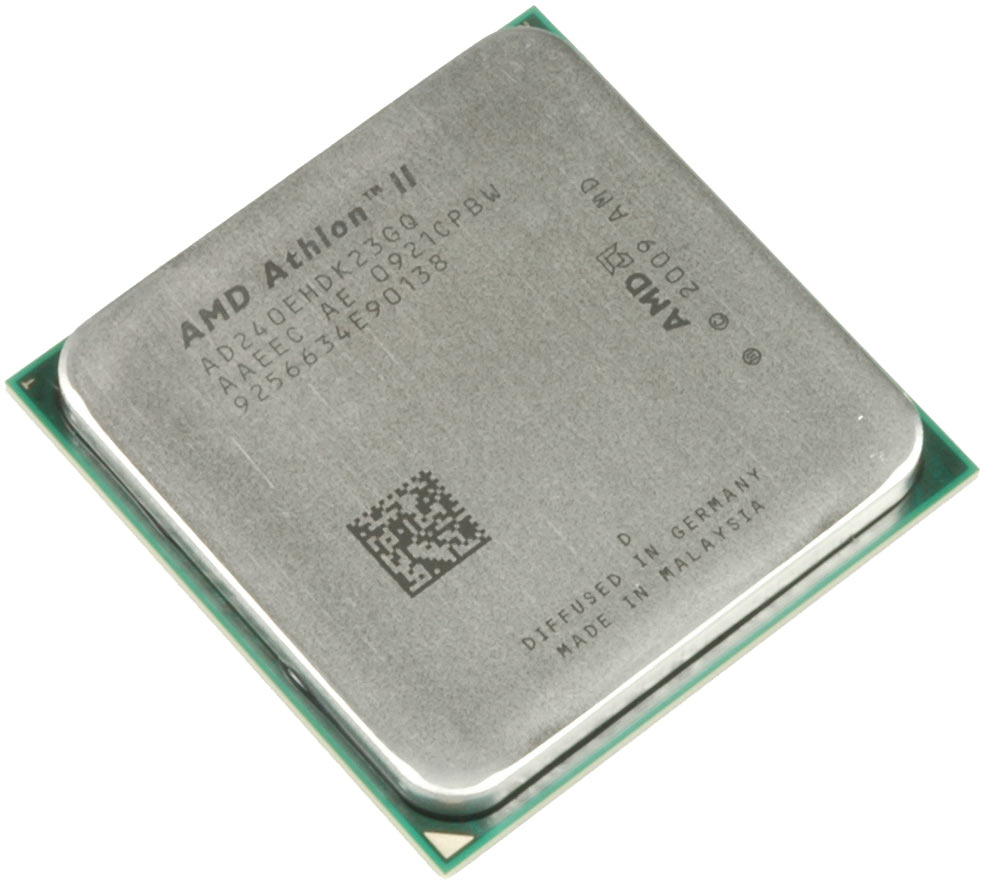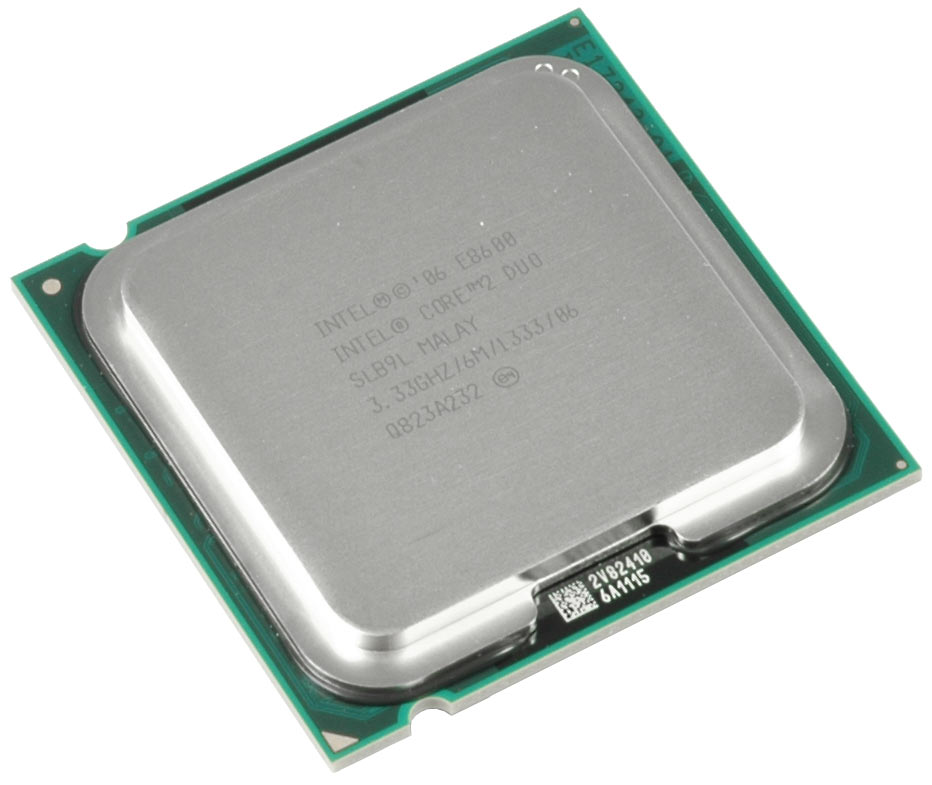Clarkdale's Efficiency: Core i5-661 Versus Core 2, Athlon II, And Phenom II
Lining Up The Competition: AMD Athlon/Phenom II X2 And Intel Core 2 Duo
AMD Phenom II X2 550
Of course, we had to use AMD’s fastest dual-core desktop processor for comparison with the Core i5. This is currently the Phenom II X2, now available at 3.1 GHz and 3.0 GHz clock speeds. Chris Angelini reviewed the Phenom II X2, code-named Calisto, in June of 2009. Calisto is the dual-core version of the triple-core “Heka” (Phenom II X3) and quad-core “Deneb” (Phenom II X4). As a result, the 6MB L3 cache is still available, only now for two cores. A 512KB L2 cache sits in each core, along with a DDR3-1333 dual-channel memory controller. The cores still support DDR2, as well, so users with Socket AM2+ motherboards can install AM3-based Phenom II processors with a suitable BIOS update. All Phenom II processors are fabricated using Global Foundries’s 45nm SOI process.
We used a Phenom II X2 550, the 3.1 GHz top model. AMD introduced a C3 stepping for its Phenom II X4 processors a few months ago. Don Woligroski compared the C2 and the C3 stepping on Phenom II X4 965 Black Edition processors, where it made a small difference on power consumption. AMD’s site doesn’t list C3 steppings for the Phenom II X2 yet, but we trust this will show much lower power consumption.
Since we expected the new Core i5 to deliver excellent power efficiency, we decided to add a second AMD processor to the test bed.
AMD Athlon II X2 240e
Several energy-efficient processors have been suffixed with an “e.” In this case, we picked an Athlon II X2 processor based on the Regor dual-core design. The same would be available with three cores (Athlon II X3, Rana) or as a quad-core (Athlon II X4, Propus). All three are based on 45nm technology and very similar to the Phenom II. The only significant difference is the L3 cache, which doesn’t exist on Athlon II processors. AMD has a low-power Athlon II X4 605e at 2.3 GHz, a 405e X3 at 2.3 GHz, and the 240e dual-core that we used for this review. The latter runs at 2.8 GHz, and although all e-models are specified at 45W TDP, it’s obvious that the dual-core is lowest on power consumption.
Intel Core 2 Duo E8600
Get Tom's Hardware's best news and in-depth reviews, straight to your inbox.
Finally, there is Intel’s fastest Core 2 Duo model, the E8600. We initially reviewed the 45nm Core 2 Duo processor (Wolfdale) almost two years ago when it was still limited to 3.16 GHz (E8500). The top model E8600 was introduced later that year, and despite many rumors, there hasn’t been an official E8700 at 3.46 GHz. Hence, the 3.33 GHz E8600 remains the top of Intel's Core 2 Duo family, which we used for this comparison. Core 2 Duo processors all support Enhanced SpeedStep technology, which reduces the clock speed in idle to the base clock times a 6x multiplier, which typically results in 333 MHz x 6 = 2,000 MHz. Therefore, more Core 2s would show similar idle power, but differ in peak power due to varying clock speeds.
The Wolfdale core comes with a large 6MB L2 cache, which is shared by both cores. The thermal envelope has remained at 65W, and there haven’t been any low power models. However, this core is also used to create four-core processors. Two Wolfdale die in a physical processor result in Yorkdale, also known as Core 2 Quad. Intel has had low-power models in this family, known as S-models (for example, the Core 2 Quad Q8200S). However, these have been rather expensive and only attractive for specific applications.
Current page: Lining Up The Competition: AMD Athlon/Phenom II X2 And Intel Core 2 Duo
Prev Page Clarkdale Platform: H55 (Intel DH55TC) Next Page AMD Platform: 785G (Gigabyte MA785GMT-UD2H)

